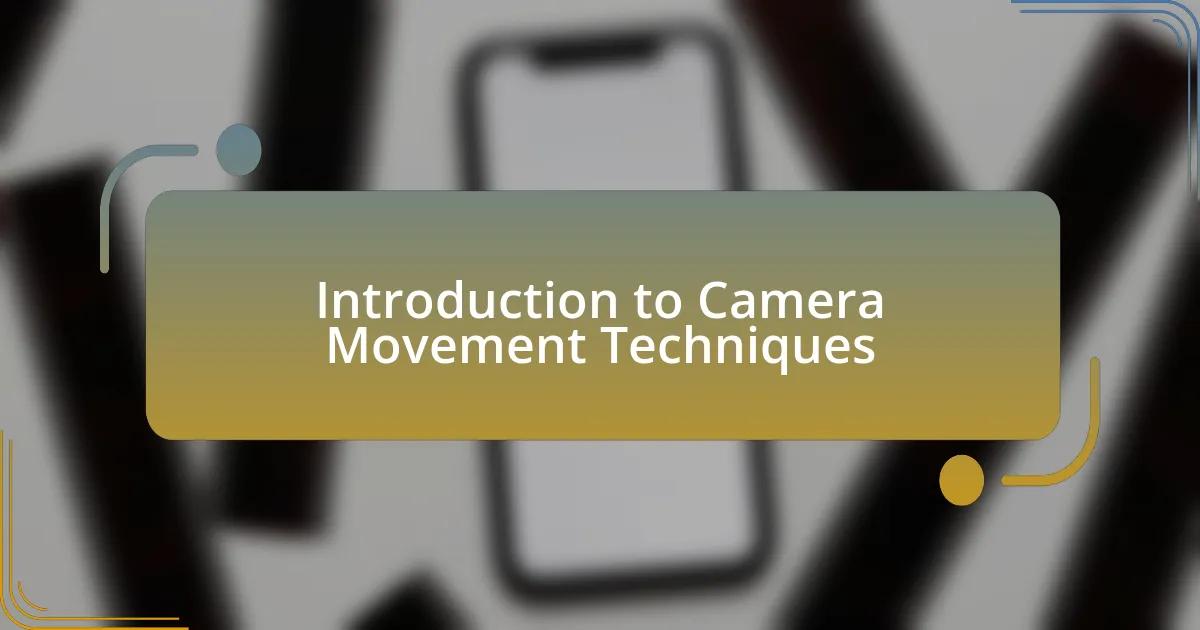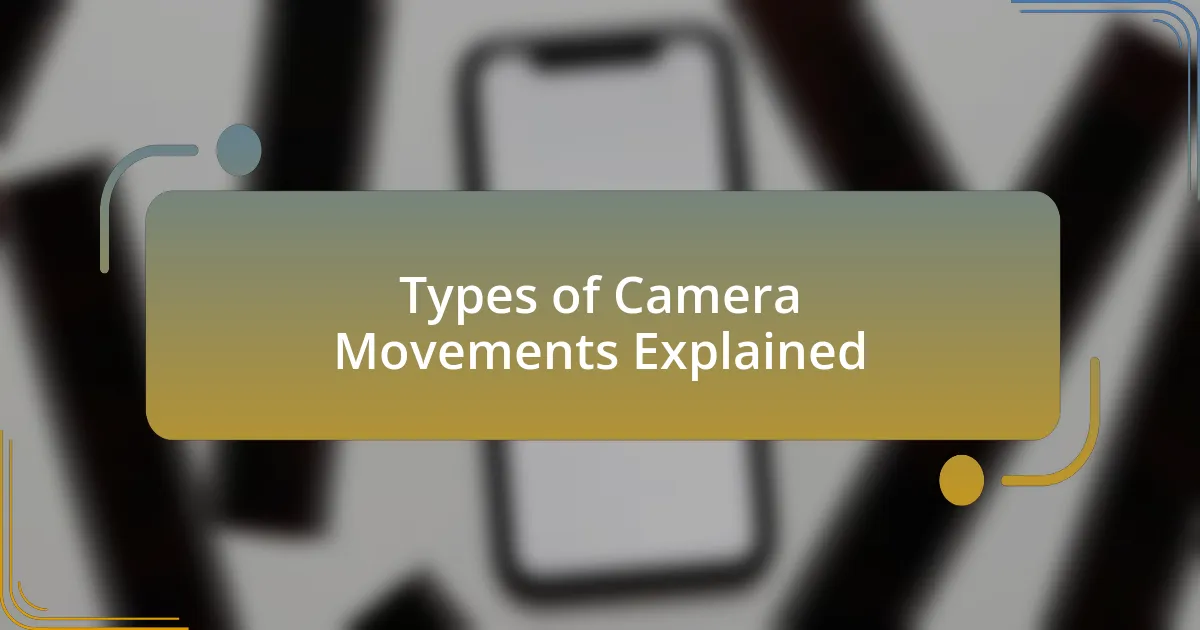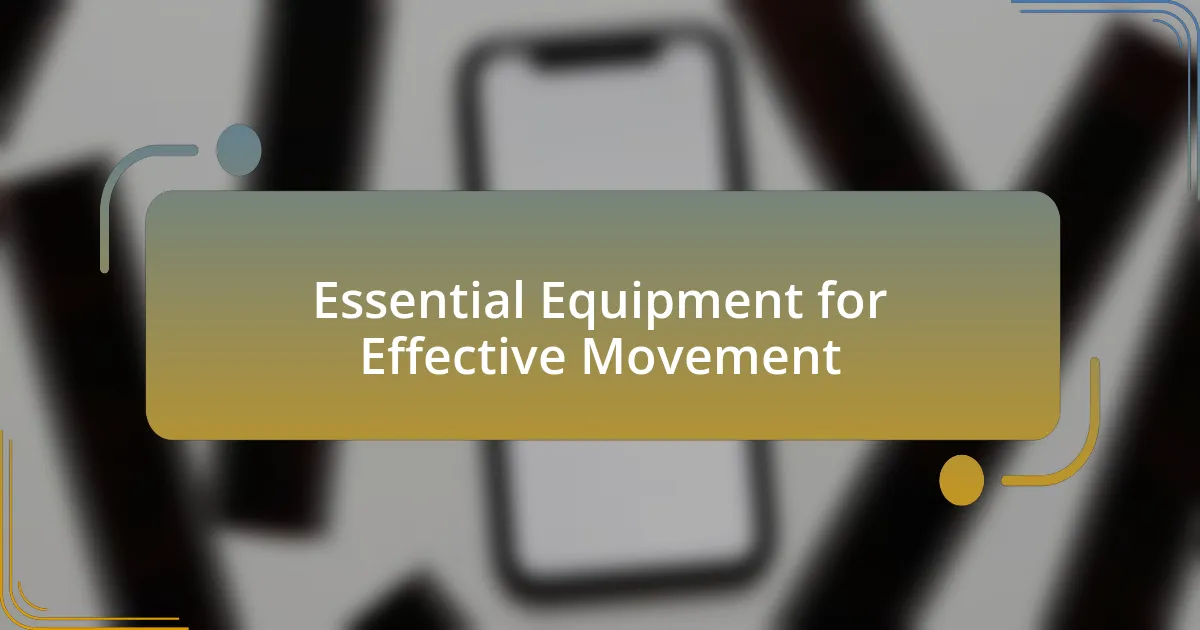Key takeaways:
- Camera movement shapes audience perception and emotional engagement in storytelling.
- Key techniques include panning, tilting, and dolly movements, each creating different emotional impacts.
- Essential equipment like tripods, gimbals, and sliders enhances camera movement and stabilizes shots, improving overall quality.
- Choosing the right movement type influences how viewers emotionally connect with the narrative.

Introduction to Camera Movement Techniques
Camera movement is a powerful tool in filmmaking that shapes how audiences perceive a story. I remember the first time I made a pan shot; it felt like I was painting a scene in motion, guiding the viewer’s gaze. Isn’t it fascinating how a simple shift can elevate a scene from ordinary to extraordinary?
Different techniques can drastically change the emotional weight of a shot. For instance, tracking shots create a sense of intimacy and connection with the subject, immersing viewers in the character’s experience. Have you ever felt your heart race as the camera follows a character running? That’s the magic of movement.
Mastering camera techniques requires understanding not just the mechanics but also the emotional impact. I learned early on that a slow dolly in can heighten tension, making the audience lean in. It’s moments like these that remind me of the subtle power behind each movement, inviting viewers to feel and react.

Types of Camera Movements Explained
There are several fundamental types of camera movements that every filmmaker should familiarize themselves with. For instance, a pan involves rotating the camera horizontally on a fixed axis. I recall using this during a scene where the protagonist is walking through a bustling market; the pan helped convey the energy and vibrancy of the surroundings, drawing viewers deeper into the narrative.
Another powerful technique is the tilt, which shifts the camera vertically. I vividly remember using a tilt to reveal a breathtaking landscape that was initially obscured by a foreground element. It’s such a thrilling moment for the audience when they see what’s beyond; it creates a sense of discovery, making them feel like they are part of the exploration.
Lastly, the truck or dolly movement provides a dynamic sense of space and depth, as the camera rolls on tracks or moves with the subject. I’ve found that employing this technique during a dramatic confrontation not only enhanced the tension but also brought the audience closer to the emotional stakes of the scene. How do you want your viewers to feel? Choosing the right movement will guide your audience’s emotional journey beautifully.

Essential Equipment for Effective Movement
When it comes to effective camera movement, investing in a reliable tripod is essential. I remember my first short film; I thought I could get away without one, but shaky footage made post-production a nightmare. A sturdy tripod not only stabilizes your shots but also opens up creative possibilities for smooth pans and tilts.
Equally important is a gimbal. This device has completely transformed the way I approach dynamic shots. I recall a thrilling chase scene where I used a gimbal to maintain fluid movement as I followed the characters. The resulting footage felt alive, contributing to a heart-pounding experience that kept the audience on the edge of their seats. Have you ever noticed how smooth camera movement can pull you into a scene? That’s the magic a good gimbal can create.
For more complex shots, using a slider can add an extra layer of professionalism. I often find myself reaching for my slider when I want to create intimate close-ups or dramatic reveals. A subtle slide can evoke emotions that dialogue sometimes cannot. It’s fascinating how a few inches of movement can drastically change the perception of a moment, don’t you think?